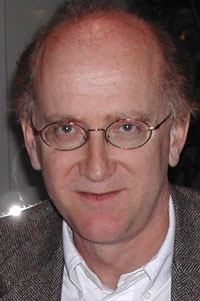| Posted: November 20, 2008 |
Rice University's Yakobson receives Nano 50 award for work with nanotubes |
|
(Nanowerk News) Mechanical Engineering and Materials Science Professor Boris Yakobson received a Nano 50 award Nov. 13 from science publication Nanotech Briefs for his advances in nanotechnology. The Nano 50 awards, now in their fourth year, recognize the top 50 technologies, products and innovators who have considerably influenced the latest advancement in nanotechnology.
|
|
Yakobson received the Nano 50 award in the Innovators category for his work with nanotubes.
|
 |
| Boris I. Yakobson
|
|
A panel of nanotechnology experts judged nominations of innovators, technologies and products. Those nominations with the 50 highest scores became this year's Nano 50 award winners.
|
|
Nanotech Briefs notified Yakobson of his award in July. Yakobson said he was pleased to receive the award.
|
|
"I feel good, what can I say," Yakobson said. "I was surprised at some point, but actually I've known about it back in July, when I received the award letter."
|
|
A researcher and professor at Rice since 1999, Yakobson describes nanotechnology as the research of atomic particles.
|
|
"Nanotechnology is a way of doing things in small scale," Yakobson said. "Larger than atoms but smaller than a billion atoms."
|
|
Known for introducing the notion and utility of the shell-model at the nanoscale as well as predicting nanotube superplasticity - the extent to which a nanotube can be stretched - Yakobson's most recent research focuses on the proposal and analysis of efficient compression and storage of hydrogen in giant buckyballs.
|
|
Buckyballs, which are tiny carbon capsules, were discovered at Rice by former chemistry professor Richard Smalley in 1985 and are so strong that they can contain volumes of hydrogen nearly as dense as those at the center of planet Jupiter.
|
|
Yakobson's other work includes the prediction of the boron buckyball B80 and calculations of nanotube strength. He is currently researching the strength of nanofilaments.
|
|
"We learn how to predict mechanical strength of some nanofilaments, theoretically," he said. "This is very important because ... we need strong materials and strong structures for millions of applications from textiles to buildings to some military reinforcements and so on."
|
|
Yakobson also conducts research in hydrogen storage for such applications including hydrogen fuel in cars.
|
|
"We gained through our recent work some good understanding of mechanism of hydrogen storage on certain substrates and certain materials," he said. "This is hopefully helpful for people who make this storage systems. This gives them some knowledge to improve them and to store hydrogen as fuel in cars."
|
|
Yakobson was also one of four researchers who received the 2008 Hydrogen Program R&D Award from the U.S. Department of Energy in recognition of outstanding contributions to hydrogen storage technologies in June.
|
|
Nanotech Briefs celebrated Yakobson's achievements at the annual Nano 50 Awards Dinner at the NASA Tech Briefs National Nano Engineering Conference in Boston, Mass. Nov. 12-13.
|

